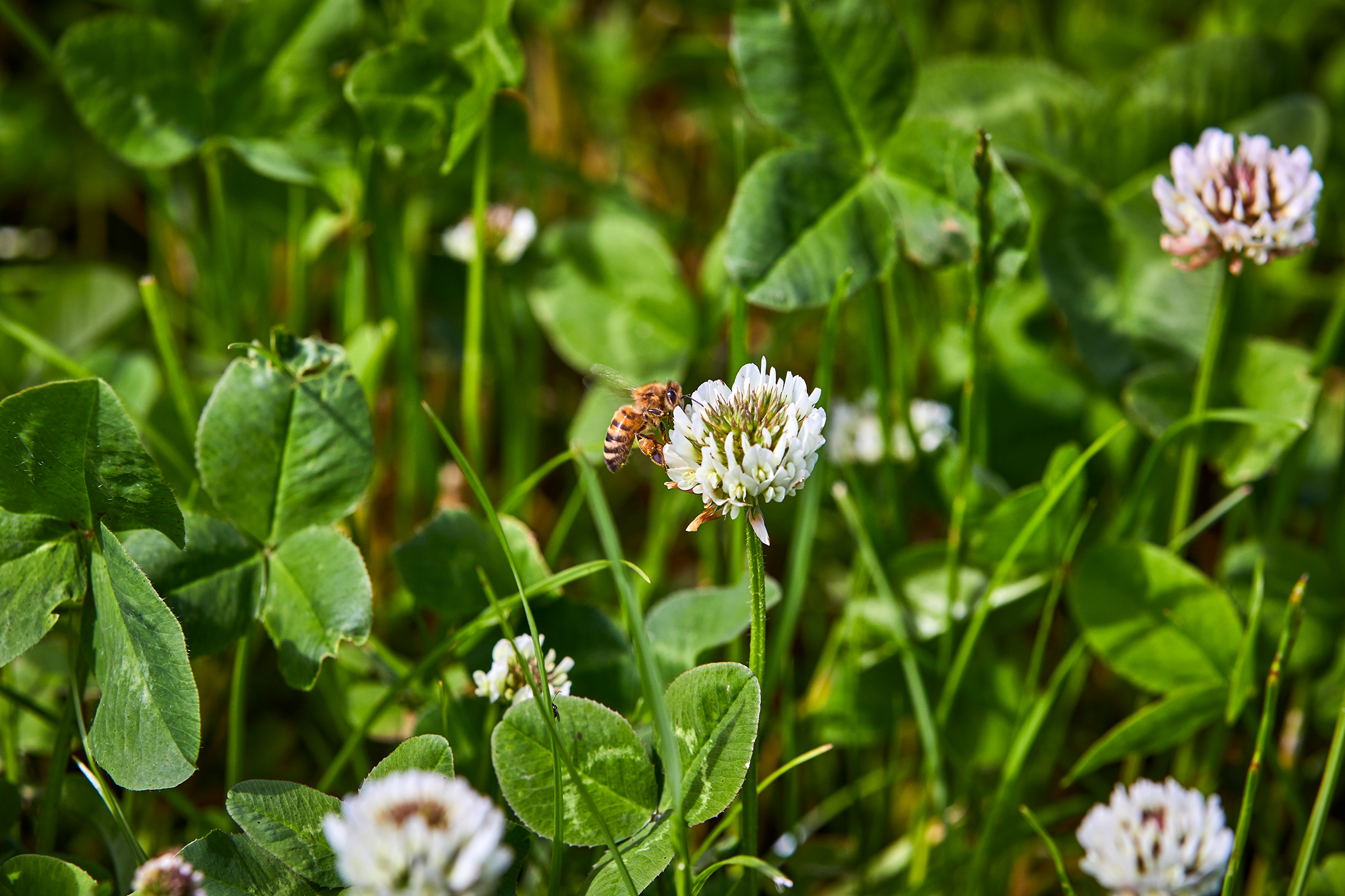Published
4 .Jun.2020DLF Grass and Clover - Sustainable farming practice
It is a global challenge to secure a green and sustainable future for our climate and environment. DLF takes part in the global vision for a sustainable future. Products produced by DLF contribute to a sustainable future as it has been summarized in the UN Sustainable Development Goals. Core to our business is to breed reliable and sustainable solutions for farmers world-wide.
To offset the climatic and environmental impact of milk and meat production farmers globally need to continually develop their farming practice towards reducing the carbon footprint and improving the environmental profile. It is possible to reduce the climate impact by basing the feed supply on a local production of perennial, high quality grass and legume as the feed source. Choosing perennial forage mixtures will improve yield and livestock productivity while at the same time sequestering carbon and reducing the methane emission pr. unit milk or meat hence reducing the carbon emission.
The soil – the foundation for sustainable farming
The soil and crop are livestock managers foundation for a sustainable farming practice, and they impact each other positively. Grassland established with a mixture of perennial fiber energy grasses and legumes (clovers or alfalfa) positively impacts the soil, environment and climate. There are multiple reasons to pay an interest to the soil features of perennial grasslands as they positively impact the soil structure, nutrient retention and carbon sequestration compared to annual crops.
Perennial grassland adds to soil fertility
The long growth season of grasses and legumes from early spring to late autumn builds up biomass in the soil. The extensive grass root biomass absorbs nitrate and other nutrients efficiently and creates micropores that are key to transport nutrients and water to avoid flooding. The root mass increases the soil biomass and sequesters carbon. To learn more about root architecture DLF has partnered up to build the state-of-the-art root screening facility “RadiMax” in cooperation with universities and plant breeders. The screening results help bring new varieties with proven root structure to the market.
Increase productivity, reduce the climate impact of milk and meat production
Methane, which is also emitted from cows, is a severe greenhouse gas, contributing to the global climate change. Local production of forage solutions which can increase productivity of livestock and the efficiency of land used for forage production should be a priority for farmers. Using grasses and legumes with a high feeding value increases milk production pr. cow. With fewer cows, the same amount of milk or meat can be produced while reducing the methane emission.
Optimized forage solutions to benefit climate and environment
Perennial forage crops have a top-notch climate and environmental profile, and if we are able to promote greater use of these crops, we are well on our way to helping agriculture in the green transition.
DLF's plant breeding is targeted to develop the next generation of robust and high productivity grass, clover and alfalfa varieties.
With DLF Grass and Clover mixtures farmers will be able to:
- Improve yield and sequester carbon. Leaving the soil undisturbed builds up organic matter and improves biological activity and soil fertility
- Rely on homegrown forage. By optimizing grassland productivity farmers become less reliant on import of feed
- Improve milk and meat production. DLF Grass and Clover forage provides high yields, digestibility and protein content
Concerning UN Sustainable Development Goals
DLF solutions are optimized to maximize output and minimize the input of other resources by being resilient to changed climate conditions. Optimized solutions from DLF reduce the global climate and environmental impact. DLF Grass and Clover makes a unique contribution to
- Goal 2: 2.4: By 2030, ensure sustainable food production systems and implement resilient agricultural practices that increase productivity and production, that help maintain ecosystems, that strengthen capacity for adaptation to climate change, extreme weather, drought, flooding and other disasters and that progressively improve land and soil quality.
- Goal 13: Climate change. Takes urgent action to combat climate change and its impact.
Read more about sutainable agriculture here.

